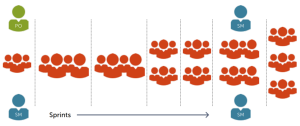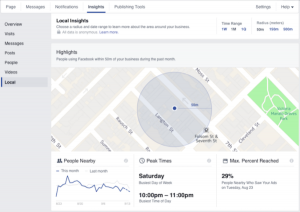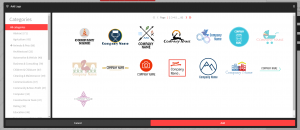There’s no way around it: Experimentation is the key to long-term business success.
With it, you’ll regularly discover remarkable ways to improve your business. Without it, you’re doomed to using guesswork, biases and hope to move your organization forward.
With this in mind, why do many leaders make decisions that are informed speculations at best and baseless assumptions at worst? The answer: Effective experimentation is challenging to scale.
It’s one thing for a scrappy startup with 25 employees to run multiple experiments on every key performance indicator (KPI). It’s a whole other ballgame when you have numerous products and hundreds, thousands or even tens of thousands of employees spread across different departments, offices and time zones.
So, how can your organization scale experimentation and outpace competitors as it grows? One word: culture.
Businesses that foster the most effective experimentation cultures often become market leaders. Whether it’s Google or Booking.com, experimentation is the default mindset at leading companies where virtually every team is running multiple experiments all the time.
How does this winning experimentation culture develop? And how can you scale the number of experiments your business runs each year? Here are five ways to establish a thriving experimentation culture.
1. Worship Data, Not Opinions
Strong opinions can be extremely dangerous to a business. When anyone makes a decision that isn’t rooted in facts, they’re rolling dice. As a result, prosperous experimentation cultures value empirical results over opinions — regardless of whose opinions they are.
However, developing this cultural value is easier said than done — especially if there’s an existing “HiPPO” (highest-paid person’s opinion) culture. Human nature leads us to gladly accept results that confirm our biases and vehemently challenge those that question our existing perceptions.
Thankfully, the solution is simple: Value data over opinions and make decisions accordingly. For example, if a test reveals that you can reduce your website’s abandoned cart rate by 10% by making the checkout pages pink, those web pages should be pink.
It’s worth noting that we can’t base every decision on data. For instance, choosing whether to expand into a new industry or acquire a new company can be challenging — if not impossible — to quantify.
Still, running an organization that inherently values data over opinions can produce tremendous results. For example, Capital One has been aggressively experimenting for decades. The company’s chief executive and co-founder Rich Fairbank refers to the bank’s focus on testing as an “information-based strategy,” which helped lead Capital One to become a Fortune 100 company.
What percentage of decisions at your company are based on data versus opinions, intuition and hunches?
2. Create a Culture of Curiosity
Experiments aren’t of much value without imagination and curiosity — after all, there’s no point in testing the obvious. But for curiosity to thrive, there must be psychological safety.
Google conducted a two-year study on team performance and found that the ability to take risks without feeling insecure or embarrassed was the most significant dynamic that set successful teams apart from other groups.
As a result, leaders and managers in experimental cultures work to make team members feel psychologically safe taking risks. These leaders know that when employees aren’t worried about being proven wrong, they’re free to explore, learn and figure things out. This is the essence of the entrepreneurial term, “fail forward.”
What’s more, open-minded curiosity and the freedom to test hypotheses without negative repercussions lead to more experiments. And in the long run, more experiments lead to more positive results.
However, many companies squash curiosity by overemphasizing the importance of successful experiments. Plus, when a company runs relatively few tests per year, the pressure placed on employees to succeed intensifies. Consequently, team members may test solutions they already know will work and avoid testing hypotheses they fear may fail.
This is another reason it’s so important to scale the number of experiments you run. When conducting many tests, a low success rate still may lead to many positive results — as well as diversify the financial and emotional risk.
Do your company’s leaders and managers champion curiosity, knowing it leads to success in the long term? Or are they more focused on short-term gains?
3. Decentralize Experimentation
Attempting to scale experimentation presents a few key challenges. For example, how can you:
- Approve and manage thousands of concurrent experiments?
- Effectively verify test results and repeat these experiments to ensure they’re accurate?
- Ensure test results are turned into actionable plans that get implemented?
Experimentation can’t scale when there’s a bottleneck. Having a central team responsible for approving and monitoring experiments may seem like a good idea for a small company. But to run thousands of concurrent experiments, you need a way to decentralize experimentation while also maintaining standards.
Thankfully, software solutions provide a way for organizations to create a central database and dashboard to run tests and log results. When a company centralizes its experimentation infrastructure in this way, everyone uses the same testing tools and has access to the data library — which fosters trust, discussion and accountability.
In essence, this is the act of democratizing experimentation. By removing bottlenecks and empowering teams to set the direction of their experiments, you can rapidly scale experiments and accelerate innovation.
However, market leaders who fully embrace a culture of experimentation often take it one step further:
4. Give Everyone the Power to Experiment
Scaling experimentation requires an organization’s leaders to trust and empower employees to run and manage tests themselves.
Although a centralized infrastructure allows leaders and managers to oversee and monitor experiments, this quickly becomes impractical when organizations begin running hundreds or thousands of tests.
For instance, Booking.com successfully manages more than 1,000 concurrent experiments at any given moment. How? Any employee at Booking.com can launch an experiment without management’s permission.
Still, when an organization empowers employees in this way, there must be transparency and accountability. For example, an organization’s centralized experimentation software should encourage peer reviews and discussions. The repository of past tests should include descriptions of failures, iterations, successes and decisions. And everyone should be able to search for and see information about current experiments.
Of course, there’s always the risk that employees may make a costly mistake. So, teams must be given extensive training on managing experiments and prioritizing which problems need solving.
5. Maintain Strong Ethics
When developing an experimentation culture, the focus is typically on the tests themselves. However, without a broader view, curiosity and a democratized culture can lead to questionable experiments that could spark a backlash.
For example, Facebook ran an experiment in 2012 to test if emotional states were contagious. Researchers showed fewer positive news stories to one group and more negative news stories to another group and monitored how the changes affected user posts.
The experiment was a success and demonstrated that emotional contagion exists online. However, about 310,000 people were subjected to emotional manipulation. Unsurprisingly, when Facebook and Cornell University published the results, the public was outraged.
This story illustrates the need for ethics training and oversight when empowering employees to own experimentation.
For example, LinkedIn set clear guidelines that state employees must not run experiments that “are intended to deliver a negative member experience, have a goal of altering members’ moods or emotions or override existing members’ settings or choices.”
All in all, it’s essential to create boundaries that maintain consumer trust and employee integrity.
Create a Culture of Experimentation to Drive Exponential Growth
To compete in today’s world, companies must make experimentation an essential aspect of everyday operations. However, organizations can’t become masters of experimentation without developing a new company culture.
In summary, successful experimental cultures often embody five distinct characteristics:
- Objective data is valued over subjective opinions. Ideas, propositions and perspectives are rarely taken at face value. Instead, they’re put to the test.
- When it comes to testing, employees are rewarded for their curiosity and efforts — not necessarily their successes. This creates emotional safety and sets the foundations for long-term success.
- Gatekeepers and bottlenecks are replaced with a centralized testing system and repository that make scaling experimentation possible.
- Employees and teams are empowered and encouraged to own their experiments, engage in discussion and conduct peer reviews.
- Leadership teams create boundaries and principles that maintain ethical responsibility and prevent negative repercussions.
All in all, developing an experimentation culture isn’t easy, but the compounding effect of incremental improvements over time can drive exponential growth.
Business & Finance Articles on Business 2 Community
(47)







